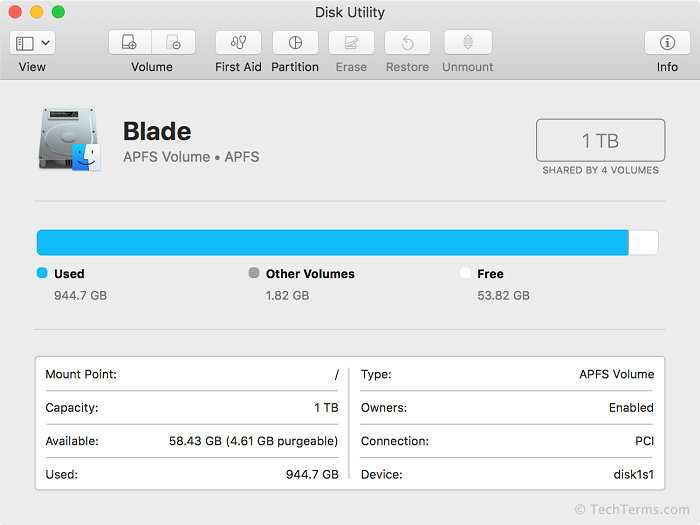APFS Definition

APFS (Apple File System) is a file system developed by Apple Inc. for macOS, iOS, tvOS, and watchOS devices. Introduced in 2017, APFS is designed to replace the older HFS+ (Hierarchical File System Plus) with a focus on performance, reliability, and security. Here are the key features and characteristics of APFS:
Key Features of APFS
- Performance:
- APFS is optimized for flash and solid-state drives (SSDs), providing faster read and write speeds. It supports features like fast directory sizing, improved file copy operations, and efficient space management.
- Space Efficiency:
- The file system uses copy-on-write technology, which allows for efficient data management. Instead of overwriting data, APFS creates a new copy of the data when modifications occur. This reduces fragmentation and improves performance.
- Snapshots:
- APFS supports the creation of snapshots, which are read-only versions of the file system at a particular point in time. Snapshots allow users to quickly revert to a previous state of the file system, facilitating backup and recovery processes.
- Encryption:
- APFS includes strong encryption support, allowing users to encrypt individual files or entire volumes. It provides options for both single-key encryption and multi-key encryption, enhancing data security.
- Cloning:
- The file system supports cloning of files and directories, meaning that a copy can be created without consuming additional disk space. This is particularly useful for applications that require frequent file duplication.
- File System Integrity:
- APFS employs checksums for metadata and files, ensuring data integrity and helping to detect corruption. This feature improves reliability and helps prevent data loss.
- Scalability:
- APFS is designed to handle large volumes and a vast number of files efficiently. It can support file sizes up to 8 exabytes, making it suitable for modern storage needs.
- Space Sharing:
- APFS allows multiple volumes to share the same underlying storage space. This means that when one volume uses less space, another can automatically utilize the freed-up space, improving overall storage efficiency.
- Dynamic Volume Resizing:
- APFS supports dynamic volume resizing, allowing users to easily increase or decrease the size of volumes without needing to reformat or restart the system.
- File Types and Metadata:
- APFS supports various file types and includes rich metadata attributes, making it easier to manage and organize files.
Conclusion
APFS is a modern, advanced file system that enhances performance, security, and efficiency on Apple devices. With features such as encryption, snapshots, and cloning, it addresses the needs of contemporary computing environments, particularly those that rely on SSDs and require robust data management capabilities. Understanding APFS is essential for users and developers working within Apple’s ecosystem, as it influences data storage and application performance.